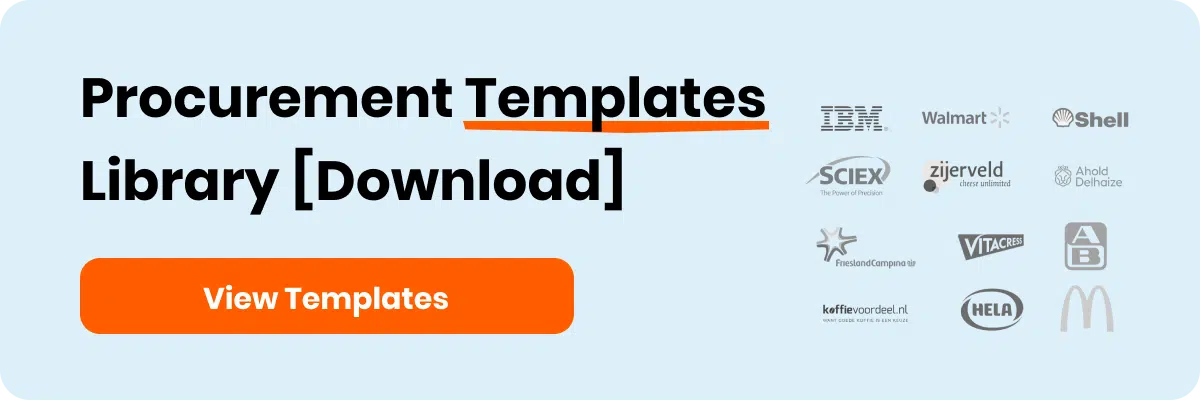ChatGPT & AI in
Procurement Course
Free Preview Lesson

Written by Marijn Overvest | Reviewed by Sjoerd Goedhart | Fact Checked by Ruud Emonds | Our editorial policy
Purchase Orders vs Invoices — 7 Key Differences
Key take-aways
- Purchase Orders vs Invoices: A purchase order is a request from a business outlining its intention to purchase goods and services. White invoices are official requests for payment that a seller sends to customers once an order is completed.
- Buyers make purchase orders and send them to sellers, whereas sellers issue invoices to the buyers.
Purchase orders and invoices may be hard to differentiate, especially if you are new in the procurement industry.
For this article, we will help you know the difference between a purchase order and an invoice. But first, we will tell you the definition and importance of both terms in the field of procurement.
Once you have finished reading this article, you will be able to differentiate the two terms that will help you in your journey in the industry. So without further ado, let us now start!
What is a Purchase Order?
A purchase order is a request or form detailing a company or organization’s intention to buy or procure products or services.
The order can be in the form of a written request or through a digital form submitted to a supplier. The purchase order is written in great detail and should follow a process that is defined by the company’s procurement team.
This is important because, as mentioned earlier, any delays in the purchasing order are disastrous for a company.
If your company depends on the daily procurement of materials or services, any delay will cause interruptions in the daily operations of your company or organization.
For example, a printing company that is unable to buy printing materials because there are delays with the purchase order will have its operations hampered until the supplies are bought immediately.
The Purpose of a Purchase Order
Purchase orders provide clarity and accuracy in business transactions. A purchase order clearly specifies the details of the purchase, such as the quantity, description, and price, ensuring there are no misunderstandings between the buyer and the seller.
Also, purchase orders play a crucial role in budget control. By requiring a purchase order, businesses can enforce a pre-approval process, ensuring that purchases align with their budgetary guidelines. This helps prevent unauthorized or unplanned spending, allowing for better financial management.
Furthermore, purchase orders contribute to efficient inventory management. They provide a clear record of the items to be received, allowing businesses to track their inventory accurately. This helps in planning and prevents situations like running out of stock or overstocking, optimizing the supply chain management process.
What is an Invoice?
An invoice is a formal payment request sent by a seller to their customers once an order has been completed. It provides a detailed list of the goods or services that have been delivered and specifies the amount of money that needs to be paid. To simplify, an invoice is like a bill that tells the buyer how much they owe to the seller.
Usually, an invoice includes essential details such as the invoice number, seller’s information, any credits or discounts applied, the payment schedule or due date, and the total amount owed.
Whatis its Purpose?
The purpose of an invoice is to serve as an official document that requests payment from a buyer for the goods or services provided by a seller. Its primary function is to communicate the amount owed by the buyer.
By providing a detailed breakdown of the goods or services delivered and their corresponding costs, an invoice ensures clarity and transparency in the payment process.
An invoice also serves as a record of the transaction between the buyer and the seller. It captures important details such as the invoice number, transaction date, and description of the items or services rendered.
This documentation not only helps businesses maintain accurate financial records but also provides evidence that the agreed-upon goods or services were indeed provided.
Furthermore, invoices often include payment terms and conditions. These terms specify the due date, accepted payment methods, and any applicable discounts or penalties for late payment.
By establishing clear expectations regarding payment, invoices help streamline the payment process and ensure a smooth transaction between the buyer and the seller. Thus, it also makes the relationship of the parties stronger.
The 7 Key Differences Between Purchase Orders and Invoices
Conclusion
Purchase orders and invoices are very similar and it can be challenging to differentiate between the two, especially if you are new to the procurement industry.
A purchase order is generally a request form that details a company’s intention to buy or procure products and services. On the other hand, an invoice is a formal payment request sent by a seller to customers once an order has been placed nad completed.
Moreover, each of their purposes also differ to conform to what is required, especially with their characteristics. Thus, we made a comparison table listing 7 key differences between a purchase order and an invoice.
Thus, it is important to know the distinction between the two terms so that you may not interchange them and mess up the procurement and the supply chain process.
Frequentlyasked questions
What is a purchase order?
What is an invoice?
What is the primary difference between a purchase order and an invoice?
The primary difference between a purchase order and an invoice is that a purchase order is a request to buy goods or services, while an invoice is a request for payment after the goods or services have been delivered.
About the author
My name is Marijn Overvest, I’m the founder of Procurement Tactics. I have a deep passion for procurement, and I’ve upskilled over 200 procurement teams from all over the world. When I’m not working, I love running and cycling.


